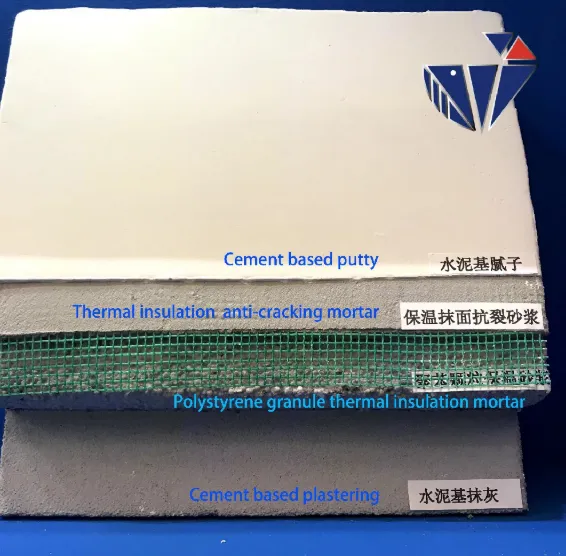
Jun . 19, 2025 14:58 Toe fo'i i le lisi
Choosing the Right Mortar Bonding Agent
In construction and renovation projects, the quality of bonding agents directly impacts the durability, safety, and aesthetics of the final structure. Selecting the appropriate mortar bonding agent, latex bonding agent, cement adhesive additive, or tile adhesive additive is critical for ensuring long-lasting results. This article explores the unique roles of these products, their applications, and how they contribute to superior construction outcomes.

Understanding the Role of Mortar Bonding Agents in Construction
Mortar bonding agents are specialized formulations designed to improve adhesion between fresh mortar and existing surfaces. They are indispensable in projects involving repairs, overlays, or vertical applications where traditional mortar might struggle to bond. These agents work by penetrating porous substrates, creating a strong chemical and mechanical bond that resists moisture, temperature fluctuations, and structural stress.
For large-scale projects, such as industrial flooring or bridge repairs, mortar bonding agents ensure seamless integration between old and new materials. They are also used in masonry work to enhance the cohesion of bricks or blocks. When selecting a mortar bonding agent, consider factors like substrate type, environmental conditions, and curing time to optimize performance.
Latex Bonding Agents: Flexibility and Durability for Modern Applications
Latex bonding agents are polymer-based additives that provide exceptional flexibility and water resistance. Ideal for environments prone to movement or humidity—such as bathrooms, kitchens, or exterior facades—they form a resilient bond that accommodates minor shifts without cracking. These agents are often mixed with cement or mortar to improve workability and reduce shrinkage.
In large commercial projects, latex bonding agents are favored for their versatility. They adhere well to non-porous surfaces like metal or painted concrete, making them suitable for retrofitting or composite material installations. Their fast curing time and low VOC content further align with modern sustainability standards, ensuring both performance and environmental compliance.
Cement Adhesive Additives: Enhancing Strength and Workability
Cement adhesive additives are engineered to augment the inherent properties of cement-based mixes. By improving cohesion, reducing water absorption, and accelerating setting times, these additives enable stronger, more durable structures. They are particularly valuable in high-stress applications like foundation repairs, precast concrete production, or seismic retrofitting.
For manufacturers supplying bulk construction materials, incorporating cement adhesive additives ensures consistency across batches. These additives also enhance workability, allowing contractors to achieve smoother finishes and reduce labor time. Whether used in industrial flooring or structural beams, their role in optimizing cement performance cannot be overstated.
Tile Adhesive Additives: Ensuring Long-Lasting Surface Installations
Tile adhesive additives are formulated to address the unique challenges of tile and stone installations. They prevent tile slippage, improve adhesion on uneven surfaces, and resist water penetration—critical for wet areas like swimming pools or shower enclosures. These additives are compatible with various substrates, including concrete, plywood, and existing tiles.
In large residential or commercial projects, tile adhesive additives streamline installation processes while minimizing waste. Their anti-sag properties ensure precise placement of heavy tiles, and their flexibility accommodates thermal expansion. By integrating these additives, manufacturers deliver products that meet the demands of modern, high-traffic environments.
FAQs About Mortar Bonding Agents and Additives
What is the primary function of a mortar bonding agent?
A mortar bonding agent strengthens the bond between fresh mortar and existing surfaces, preventing delamination and improving structural integrity. It is essential for repair work or applications where traditional adhesion methods may fail.
Can latex bonding agents be used outdoors?
Yes, latex bonding agents are highly resistant to moisture and temperature changes, making them suitable for both indoor and outdoor applications. They are commonly used in exterior cladding and waterproofing systems.
How do cement adhesive additives improve concrete performance?
Cement adhesive additives enhance compressive strength, reduce permeability, and improve workability. They also accelerate curing times, which is beneficial for projects with tight deadlines.
Are tile adhesive additives compatible with large-format tiles?
Absolutely. Tile adhesive additives provide superior grip and anti-sag properties, making them ideal for large-format tiles or heavy natural stone installations.
What safety precautions are needed when using mortar bonding agent?
Always wear protective gear, ensure adequate ventilation, and follow manufacturer guidelines for mixing and application. Store products in a cool, dry place to maintain efficacy.
Selecting the right mortar bonding agent, latex bonding agent, cement adhesive additive, or tile adhesive additive is a strategic decision that influences project success. By understanding their distinct properties and applications, manufacturers and contractors can deliver structures that stand the test of time. Prioritize quality, compatibility, and performance to meet the evolving demands of the construction industry.
-
Versatile Hpmc Uses in Different Industries
Tala FouJun.19,2025
-
Redispersible Powder's Role in Enhancing Durability of Construction Products
Tala FouJun.19,2025
-
Hydroxyethyl Cellulose Applications Driving Green Industrial Processes
Tala FouJun.19,2025
-
Exploring Different Redispersible Polymer Powder
Tala FouJun.19,2025
-
Choosing the Right Mortar Bonding Agent
Tala FouJun.19,2025
-
Applications and Significance of China Hpmc in Modern Industries
Tala FouJun.19,2025







